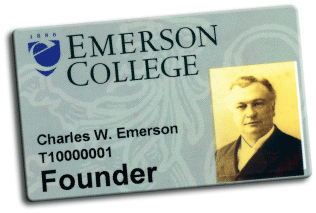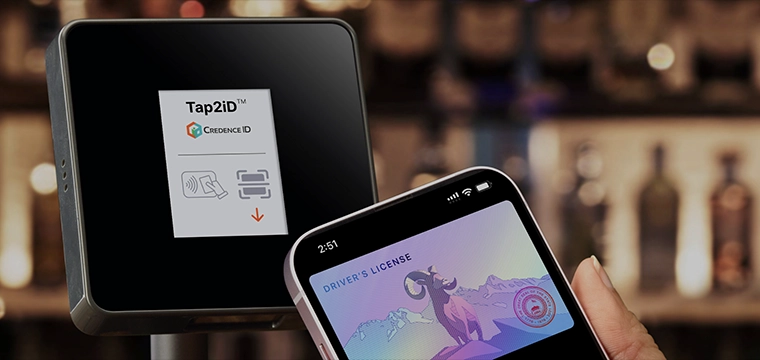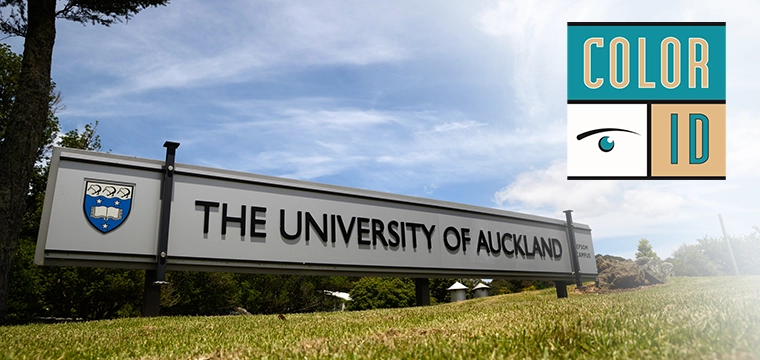 Rapid rollout on Boston campus
Rapid rollout on Boston campus
Re-carding a college, even one with just 4,200 students, doesn’t come easy. When those cards feature a new technology and the time line is short, a lot of things can go wrong.
For Boston’s Emerson College, however, it was a relatively smooth process and the few things that went wrong were fixed on the fly, recalls Adam Travis, Emerson’s enterprise system administrator, information technology.
Technically, Emerson has no campus to speak of, says Travis. “We’re right in the theater district. Thousands walk by our buildings every day. To enter each of the eight buildings on campus you walk past a guard post.” The school’s dorms are on the upper floors so students need to present their card to enter the building and again to enter the living areas, he adds.
One element that led to the abandonment of Emerson’s previous system was the college’s implementation of the Banner system to handle payroll, student information, admissions and finance, says Travis. In the school’s older student information system, Social Security numbers were the primary student identifier, he says, but the switch to Banner required the university to issue new student ID numbers.
That, says Travis, provided an ideal opportunity to replace the legacy card system and magnetic stripe card the school used for about 10 years.
When it came time to ditch the current system and to find someone to help the college re-card, Emerson looked at a number of vendors, says Travis. One vendor that caught Emerson’s eye was campus card provider CBORD. Another was Charlotte, NC-based ID provider ColorID. Both ended up providing re-carding assistance to the school.
This part of the process was not a quick. The first discussions took place in 2007 but the contract was not signed until two-years later, Travis says. At about the same time Travis was negotiating with ColorID to print the new student cards. “They started getting us quotes then we had conference calls and worked closely with them in June and July,” says Travis.
The new campus card deployment
Emerson’s new system is more modern and enables greater flexibility and better security, says Read Winkelman, CBORD’s vice president of sales. With Emerson’s main concerns being security, contactless technology quickly rose to the top. “A contactless card tends to be more difficult to duplicate which makes it more secure,” he says. “Emerson described what they were looking for which helped us guide them towards the technology to re-card their system.”
The university decided to go with HID’s iCLASS contactless smart card technology, Winkelman says. “iCLASS is certainly a little newer and more secure than prox,” says Winkelman. “We have 35 or 40 customers with some form of iCLASS implementation, all college campuses.”
David Stallsmith, ColorID product management director, agreed that iCLASS would be beneficial compared to a prox card, citing, the increased memory and ability to be used with more applications.
The top concern for many Universities is physical access control, and officials are often willing to pay a little more for a more secure card, explains Stallsmith.
“We tend to recommend iCLASS in most cases because HID manufactures its own cards and their support is excellent,” he says. “When they’re going to re-card the whole campus at one time the school needs to know that the cards can be delivered on time and that they work.”
Quick rollout
Winkelman says the contactless conversion went fast. “From signing the contract, it took about three months.”
The campus card system deployed is CBORD’s CS Gold that handles both debit, through the mag stripe, and physical access through the contactless iCLASS chip, says Winkelman.
Emerson now has iCLASS readers mounted at each of the guard posts when entering buildings. “When someone presents the card, his picture comes up on the screen so the guard can see that the picture matches the photo,” says Emerson’s Travis. “He doesn’t have to look at the card but can see the photo.”
Mag stripe card readers and POS terminals were installed in the dining hall. In addition, readers were installed at copying, laundry and vending machines. About 50 iCLASS-based door access readers were installed across the campus, says Travis.
Emerson went with HID’s Corporate 1000 program that guarantees a certain range of ID numbers are assigned to Emerson and won’t be duplicated at any other site, says Travis.
CBORD’s UGryd system for off-campus card use was also implemented. “Right now about a half dozen businesses, mostly food and one CVS pharmacy, accept the Emerson card,” says Travis.
The school is also testing an elevator card reader that controls access to certain floors. “One floor of our dorm includes apartments for guest artists or scholars in residence,” says Travis. “This allows guests access to their apartment but no one else can get to that floor.”
“A distinct advantage of utilizing contactless is that students no longer have to hand the card to a guard at the desk … they can keep the card in their wallet or bag and present it at the reader,” says Travis.
When asked about the advantages for his team, he explains, “I like the fact there’s no moving parts, no mag stripe read heads which means fewer repairs.”
Plan with future needs in mind
The CBORD system enables Emerson to integrate video surveillance functionality when the campus is ready.
Education is crucial
“We had to let people know they couldn’t punch holes in the card because of the chip,” says Emerson’s Adam Travis, and even teach them “what to do when the readers didn’t have a slot to swipe.”
Leave enough time to receive all necessary components
“Our last batch of cards arrived less than 24 hours before distribution started,” Travis says. “They made it on time, but it was nerve-racking. And we had no blank stock during the week of implementation.”
Communicate with other business units
Because the bookstore upgraded its software during the implementation process, Travis reports that they had to scramble to ensure compatibility with the new systems.
Leave time for testing and training
“We didn’t have a lot of time for testing because of the tight time frame. By the time we went live in August, there wasn’t time to test the meal plans. For the most part things did work,” says Travis. But be careful.
Order spares
“We didn’t (invest in spare readers) to save money, but a couple readers had problems at installation,” explains Travis, suggesting that you will want to have them anyway for future needs so go ahead and get them up front.




